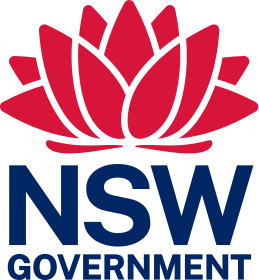Safety first for 30,000 strong Transport team
A fundamental focus on safety has helped Transport for NSW deliver a number of innovative and practical initiatives to help reduce workplace risks and injuries.
As Safe Work Month comes to an end today, Transport is reflecting on some of the innovative and common-sense safety solutions the department has rolled out and collaborated on in the last year.
Transport for NSW Secretary Josh Murray said the department is committed above all else to providing a safe environment for workers and the wider public.
“Safety is the core of everything we do every day, in every community across the state,” Mr Murray said.
“Our diverse 30,000-strong transport workforce faces a range of challenges to deliver better connections for NSW. But in tackling each day’s unique demands, every single worker also has the right to get home safely.
“One workplace injury is one too many, and we are always on the hunt for ways to improve safety, whether that’s proactively identifying new opportunities or responding to and investigating incidents when they do happen to prevent reoccurrences.”
Over the last 12 months, Transport has completed an average of more than 16,000 safety inspections and 240 safety audits on worksites, and rolled out an array of initiatives.
Reductions were recorded in both the Disabling Injury Frequency Rate (DIFR) and the Total Recorded Injury Frequency Rate (TRIFR) – key industry standards – across the Transport portfolio agencies for the past 12 months.
Mr Murray said the best ideas and feedback come from listening to our frontline staff and collaborating with partners including contractors and experts.
“When we find a safer way to do something, we share it. There’s no copyright on safety,” Mr Murray said.
“Our teams deliberately didn’t patent their ‘Bowe Kerb’ solution that protects against four-wheel drives from mounting the median into incoming traffic, so anyone can use this home-grown design solution, internationally.
“We’re working with regional Councils and constructors on ways to better protect roadside workers from the dangers of passing trucks or speeding vehicles.
“Our Coffs Harbour Bypass team also identified the risk of trailer rollover at the site and introduced a PVC liner system across the project so trailers don’t have to tilt as high to unload, drastically reducing the likelihood of unbalancing.
“We’ve seen innovation through new virtual reality headsets they help our Sydney Trains crew train for emergency scenarios to keep themselves and passengers safe in a more immersive and engaging environment.
“Aquatic drones are making underwater inspections on bridges and wharves safer and faster. This is a major boost for worker safety as we regularly operate in busy and sometimes dangerous waterways, and help us identify risks before sending divers down to carry out repairs.”
“We have introduced climbing robots to scale bridges and gantries, to reduce the key risk of working at height, and dropped objects. Conducting inspections from the ground and still getting precise measurements, or gathering samples, significantly reduces the risk of harm.
“This year’s Safe Work Month theme has been ‘safety is everyone’s business’ - and that’s a personal responsibility we take extremely seriously at Transport.”
Transport for NSW has also rolled out enhanced risk management initiatives to make incident reporting easier and more effective across the department, through the MyNgara App and the Safer Together Safety Management System which brings together the combined experience of the state’s roads and transport agencies for the first time.
Digitising how we manage and record health and safety risks has led to an increase in reporting and helped to better connect hazard, incident and risk data.
Work health and safety performance
Performance indicator | 2023–24 |
Number of significant incidents in NSW (Transport portfolio-wide) | 125 |
Lost time injury due to workplace-related injuries or illness* | 394 |
*Excluding critical incident leave
Work health and safety measures and targets (1)
| 2033 target (2) | 2023 - 33 target | 2023 - 24 actual | ||
Measures |
| Total | Rate | Total | Rate |
Incidence of work-related injury or illness among workers (3) | <3.5% | 1,087 | 35.00 per 1,000 workers (3.5%) | 1,536 | 48.6 per 1,000 workers (4.86%) |
Frequency rate of claims resulting in permanent impairment (4) | 15% ↓ | 11 | 0.22 | 8 | 0.15 |
Frequency rate of serious claims resulting in one or more weeks off work (5) | 20% ↓ | 386 | 7.39 | 504 | 9.40 |
Worker fatalities caused by traumatic injuries | 30% ↓ | 0 | 0 | 0 | 0.00 |
Cases of accelerated silicosis (data from iCare) | 0 | 0 | 0.00 | 0 | 0.00 |
Work-related respiratory disease (data from iCare) | 20% ↓ | 2 | 0.05 | 6 | 0.11 |
(1) The data in this table is for Transport employees only.
(2) Transport for NSW targets for 2033 based on Australian Work Health and Safety (WHS) Strategy 2023–2033.
(3) Includes critical incident leave (CIL) injuries and COVID-19.
(4) Permanent impairment is a claim that has resulted in a permanent impairment and a lump sum cost is paid out.
(5) Serious claim means when a worker has taken one or more weeks off work as the result of an injury or illness.
